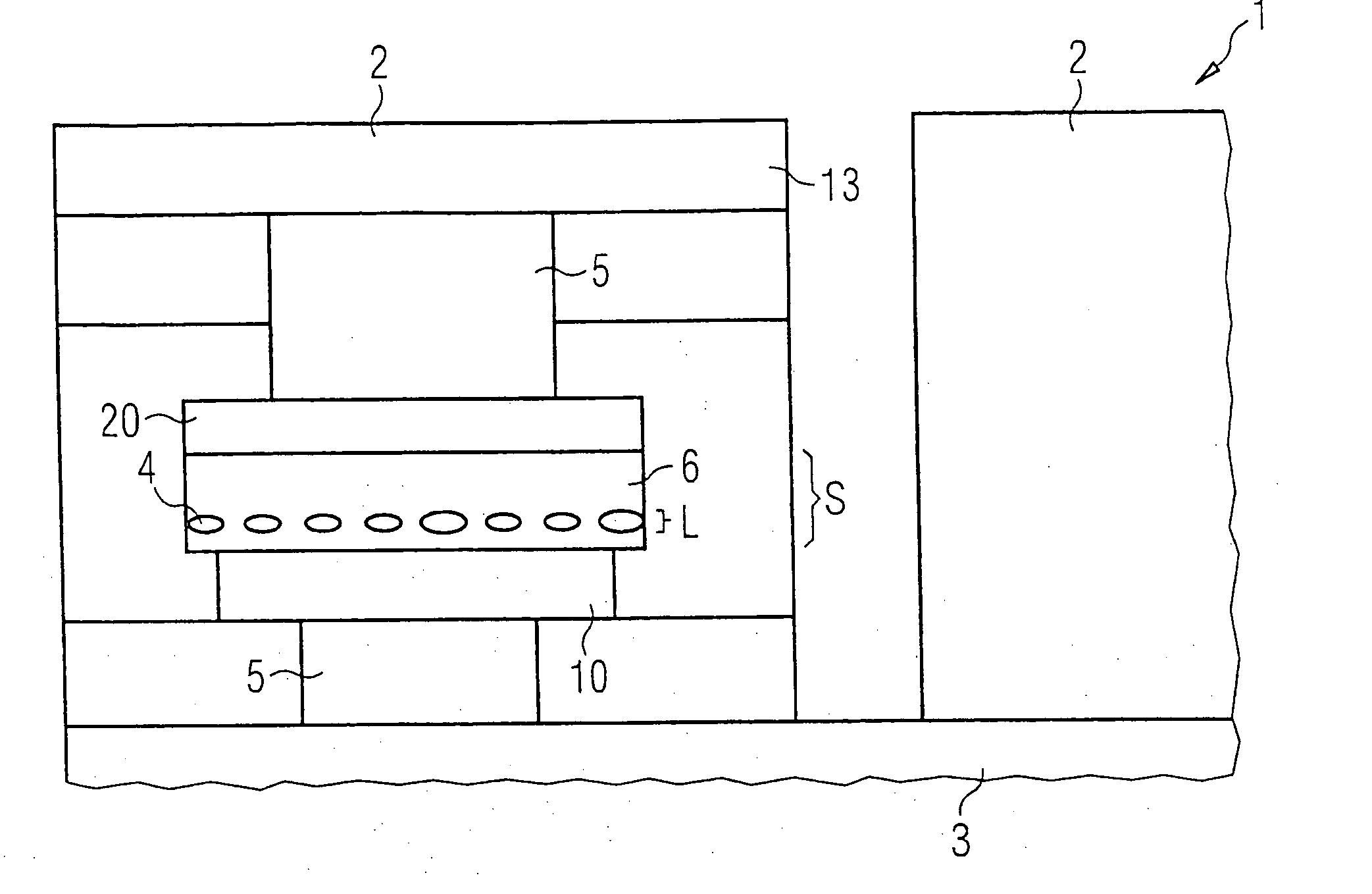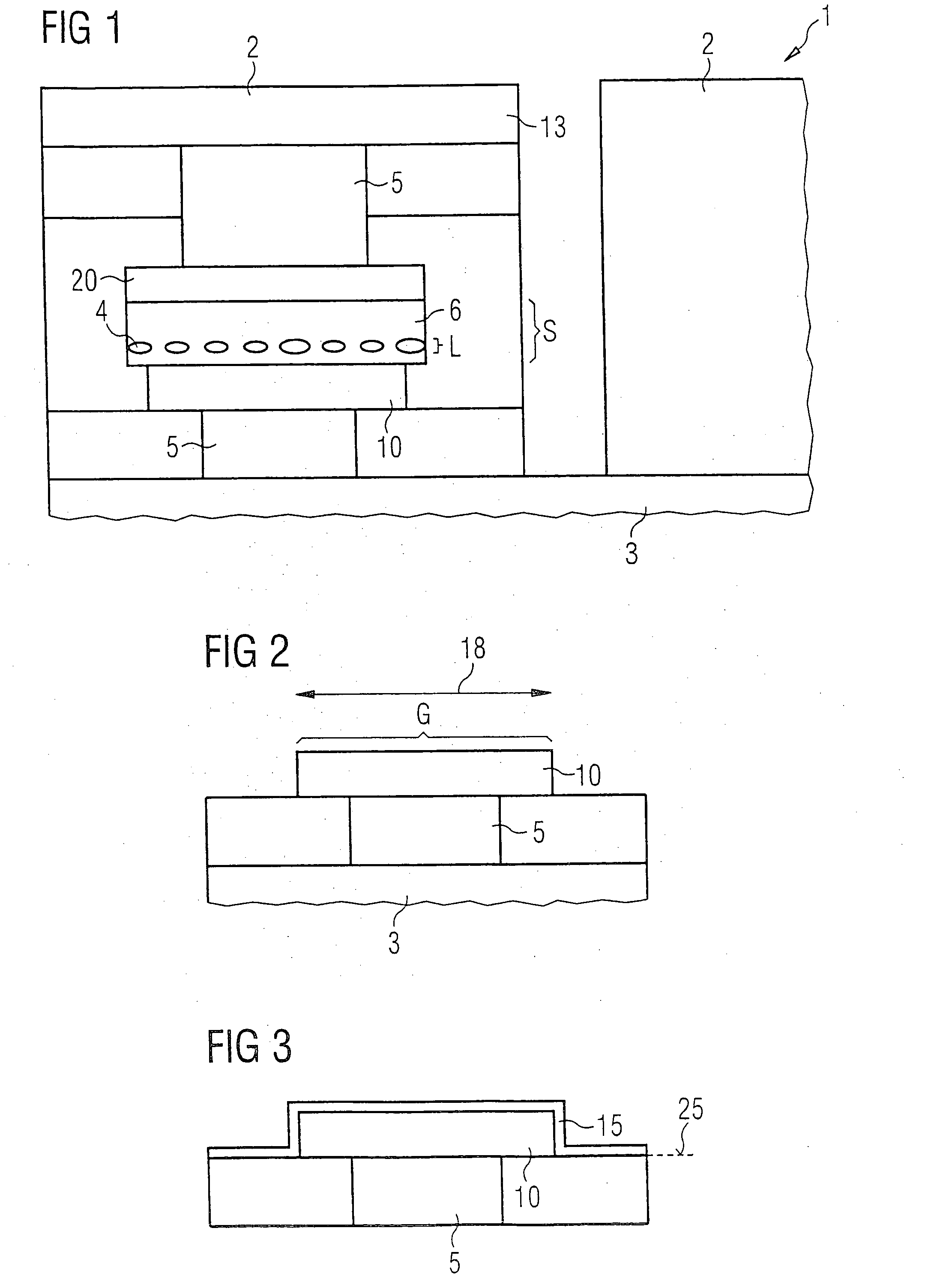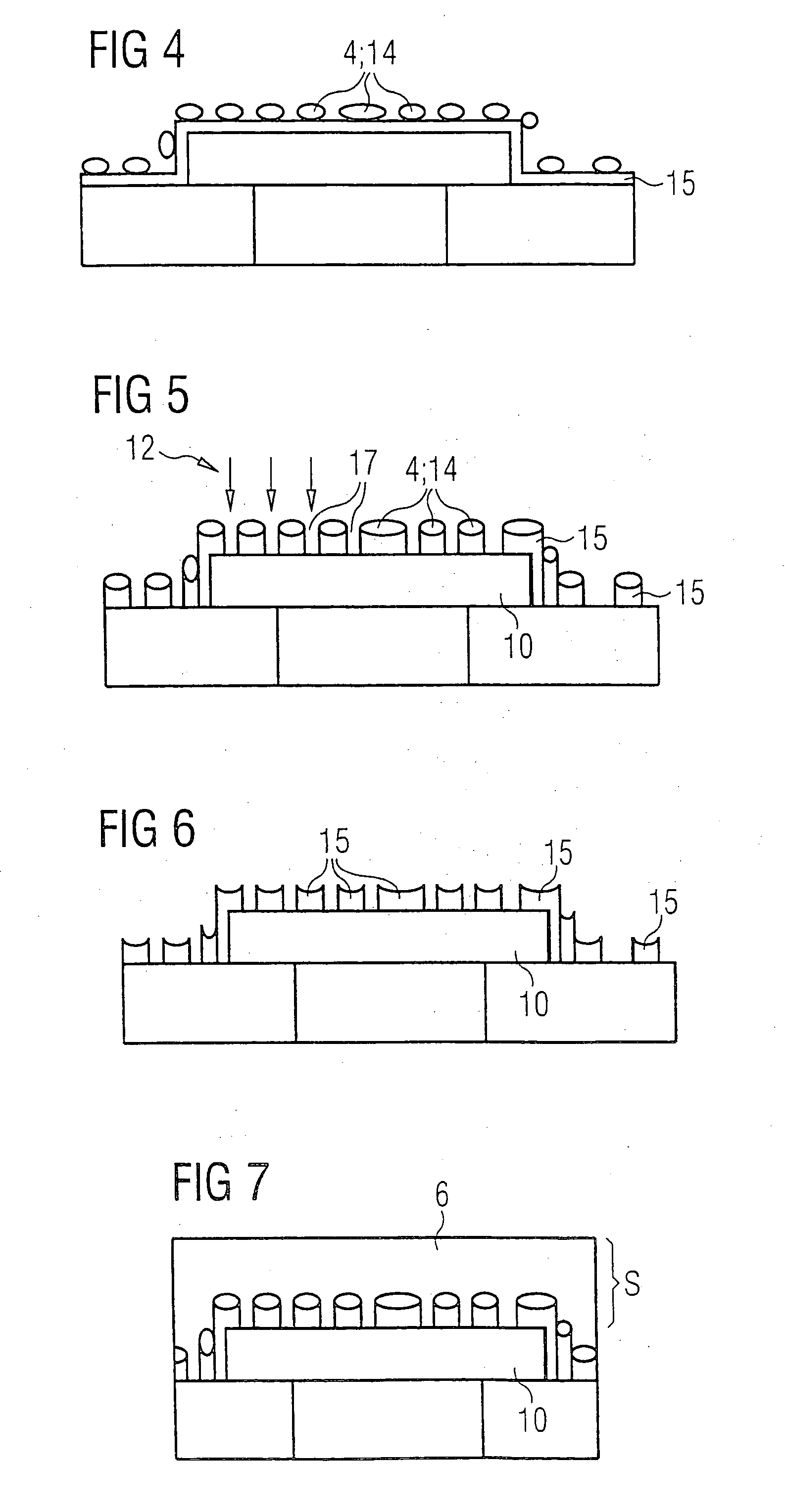Intergrated semiconductor memory and method for producing an integrated semiconductor memory
a technology of integrated semiconductor memory and semiconductor memory, which is applied in the direction of semiconductor devices, digital storage, instruments, etc., can solve the problems of high energy consumption of integrated semiconductor memory, temperature increases required for programming memory cells, and the inability to achieve temperature increases. , to achieve the effect of high current density
- Summary
- Abstract
- Description
- Claims
- Application Information
AI Technical Summary
Benefits of technology
Problems solved by technology
Method used
Image
Examples
Embodiment Construction
[0043]FIG. 1 shows a schematic cross-sectional view of a semiconductor memory 1 according to an embodiment of the invention, in which a memory cell 2, which is representative of the rest of the memory cells, has a first electrode 10, a second electrode 20 and a storage medium 6 in between. The electrodes 10, 20 are connected by contact connections 5 to corresponding interconnects or to the substrate 3 and an interconnect 13 situated at a higher level. In the lateral direction, the memory cell is shielded from adjacent memory cells by corresponding insulations.
[0044] According to embodiments of the invention, within the storage medium 6 provision is made of a layer or layer plane in which impurity particles made from a material 4 are incorporated, as a result of which, at the level of the layer plane, that proportion of the basic area of the storage layer situated between the electrodes 10, 20, which is covered with the storage medium 6 is reduced to a fraction or in any event to a ...
PUM
 Login to View More
Login to View More Abstract
Description
Claims
Application Information
 Login to View More
Login to View More - R&D
- Intellectual Property
- Life Sciences
- Materials
- Tech Scout
- Unparalleled Data Quality
- Higher Quality Content
- 60% Fewer Hallucinations
Browse by: Latest US Patents, China's latest patents, Technical Efficacy Thesaurus, Application Domain, Technology Topic, Popular Technical Reports.
© 2025 PatSnap. All rights reserved.Legal|Privacy policy|Modern Slavery Act Transparency Statement|Sitemap|About US| Contact US: help@patsnap.com



